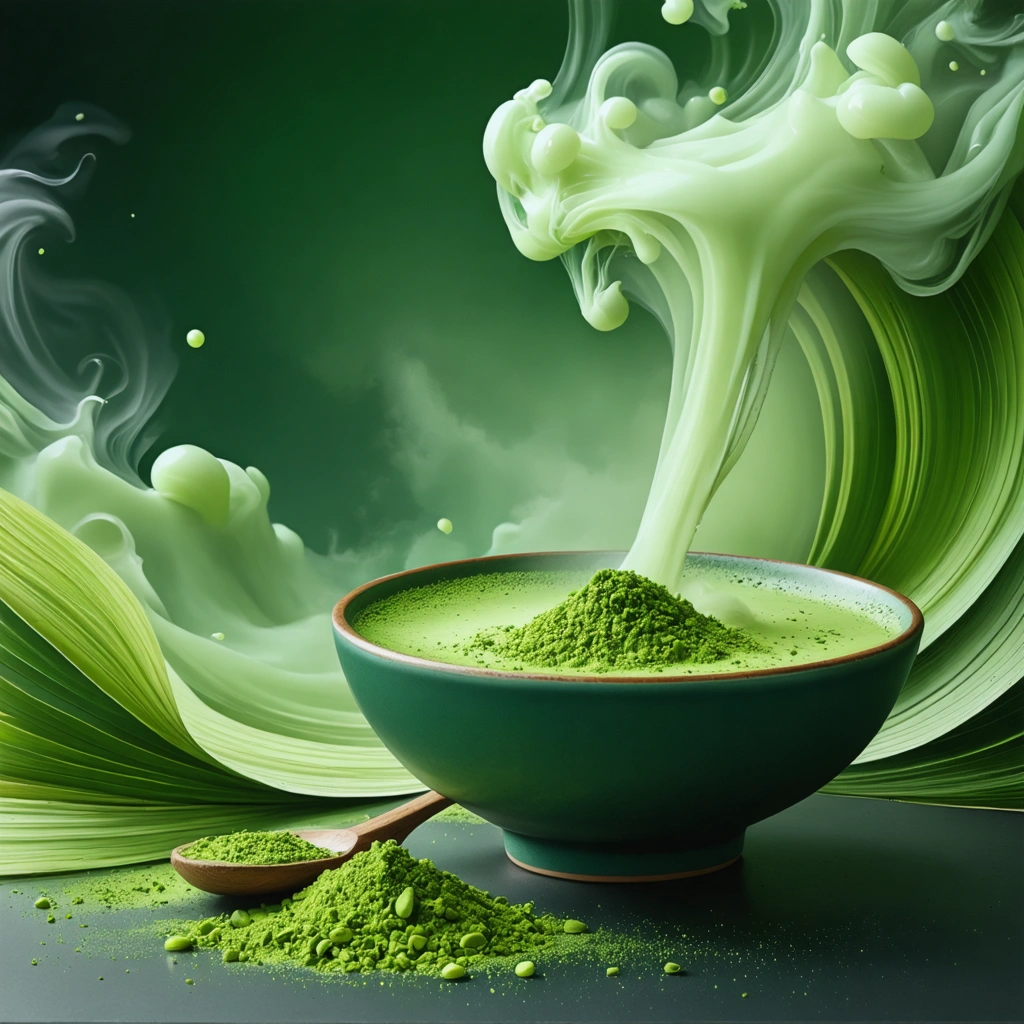From Ancient Ritual to Modern Health Icon
Have you ever wondered why a simple powder of finely ground green tea leaves has captured the hearts and habits of health enthusiasts worldwide? Matcha isn’t just another trendy beverage – it’s a centuries-old tradition now surfacing as a powerhouse of wellness. But what exactly makes matcha so special among the countless health drinks cluttering supermarket shelves? The answer lies deep in its vibrant green hue and its remarkable antioxidant-rich profile, which sets it apart as a natural ally in the quest for vitality and well-being.
For many, the journey into the world of matcha begins with curiosity and a touch of skepticism. After all, how can a powdered tea leaf compete with the likes of kale smoothies, turmeric lattes, or exotic superfood blends? Those who’ve experienced matcha firsthand, especially using a traditional matcha set to prepare the drink, quickly discover a complex ritual that marries flavor, culture, and health benefits in every cup.
Why Are So Many People Turning to Matcha?
In today’s fast-paced world, maintaining energy and mental clarity while supporting long-term health is a balancing act. Conventional caffeine sources like coffee offer a quick pick-me-up but often come with jitters and energy crashes. Matcha caffeine, however, delivers a gentler, more sustained boost thanks to its unique composition. This difference has fueled a surge in matcha’s popularity, morphing it from a niche Japanese tea ceremony item into a global health drink staple.
Yet, despite its growing fame, many still question if matcha is just hype or a genuine health booster. Is the antioxidant content truly significant? Can it really affect energy and focus differently? And what’s the best way to enjoy matcha—should you invest in a matcha set to prepare it traditionally, or are ready-made options just as effective?
The Green Elixir Packed with Antioxidants
What sets matcha apart is its remarkable concentration of antioxidants known as catechins, particularly epigallocatechin gallate (EGCG). These compounds combat oxidative stress, which has been linked to aging, inflammation, and chronic diseases. Because matcha involves consuming the whole tea leaf in powdered form, rather than steeping leaves and discarding them, you ingest a far higher level of these beneficial compounds.
This antioxidant advantage is not just a scientific curiosity; it translates into real health support. Regular matcha drinkers often report improved skin health, enhanced metabolism, and a stronger immune response—all attributed to the green tea’s potent phytochemicals.
Unpacking the Matcha Experience: More Than Just a Drink
But matcha is more than its chemical profile. The experience of preparing matcha with a proper matcha set—a bamboo whisk (chasen), a bowl (chawan), and a scoop (chashaku)—connects you to a mindful practice that calms the mind as much as it energizes the body. This ritualistic aspect adds dimension to matcha’s appeal, making it not only a beverage but a moment of daily wellness.
For those seeking a health drink that stimulates the senses, supports longevity, and offers a more balanced caffeine intake, matcha presents an inviting option. Whether you’re a wellness newbie or a seasoned tea lover, understanding matcha’s rise as a health staple reveals why this green powder is more than a fleeting fad—it’s a green wave sweeping through modern lifestyles.

Matcha’s Green Wellness Wave: Why Is Matcha Becoming a Health Drink Staple?
Matcha’s recent surge in popularity as a health drink is deeply rooted in its unique antioxidant-rich profile, cultural heritage, and distinctive preparation rituals. People are increasingly drawn to matcha not only for its vibrant flavor but also for its holistic wellness benefits that align with modern health trends.
What Makes Matcha Different from Other Green Teas?
Unlike traditional green tea where leaves are steeped and discarded, matcha is a finely ground powder made from shade-grown green tea leaves. Because you consume the entire leaf in powdered form, matcha delivers a higher concentration of nutrients and antioxidants.
- Antioxidant Content: Matcha is particularly rich in catechins, especially epigallocatechin gallate (EGCG), known for their cancer-fighting and metabolism-boosting properties.
- Chlorophyll and Amino Acids: The shade-growing process increases chlorophyll, giving matcha its vivid green color and detoxifying properties, along with L-theanine, an amino acid promoting relaxation.
According to a study published in the Journal of Chromatography A, matcha contains up to 137 times more antioxidants than regular brewed green tea, making it a potent beverage for supporting immune function and reducing oxidative stress.
How Does Matcha’s Antioxidant Profile Fuel Its Rise as a Health Drink Staple?
Antioxidants are crucial for neutralizing free radicals that cause cellular damage, aging, and chronic diseases. Matcha’s high antioxidant concentration supports several health benefits:
- Enhanced Metabolism and Fat Burning: EGCG in matcha has been shown to boost thermogenesis, aiding weight management.
- Improved Brain Function: The combination of caffeine and L-theanine provides sustained mental alertness without jitters, enhancing focus and calm.
- Detoxification: Chlorophyll helps eliminate heavy metals and toxins from the body.
These qualities have made matcha a favorite among health-conscious consumers, athletes, and wellness influencers, fueling its integration into smoothies, lattes, and even skincare products.
What Role Does Matcha Caffeine Play in Its Popularity?
Matcha contains caffeine, but its effects differ significantly from coffee or black tea due to the presence of L-theanine. This amino acid modulates caffeine’s impact, resulting in:
- Sustained Energy: Matcha caffeine provides a longer-lasting boost without the typical energy crash.
- Calm Alertness: The synergy of caffeine and L-theanine promotes relaxation alongside focus.
Typically, a serving of matcha contains about 35 mg of caffeine, roughly half that of a cup of brewed coffee, making it an excellent option for those sensitive to caffeine or seeking balanced stimulation.
Why Invest in a Matcha Set for an Authentic Experience?
For enthusiasts looking to fully embrace matcha’s cultural and health benefits, a matcha set is essential. This set usually includes a bamboo whisk (chasen), a tea scoop (chashaku), and a bowl (chawan), each designed to optimize preparation:
- Bamboo Whisk: Creates a smooth, frothy texture that enhances flavor and mouthfeel.
- Tea Scoop: Measures the perfect amount of matcha powder.
- Tea Bowl: Provides a proper vessel for whisking and drinking.
Using a traditional matcha set not only honors centuries-old Japanese tea ceremony traditions but also ensures the best extraction of antioxidants and flavor, making the health benefits more accessible and enjoyable.
What Are Some Real-Life Examples of Matcha’s Impact on Wellness?
Many wellness communities and fitness experts have embraced matcha as a functional beverage. For instance:
- Professional athletes incorporate matcha into their pre-workout routines for its balanced caffeine and antioxidant support.
- Yoga instructors often recommend matcha to complement mindfulness practices due to its calming yet alerting properties.
- Nutritionists highlight matcha as a superfood that fits clean-eating and detox plans.
These endorsements and the beverage’s versatility in recipes—from traditional whisked tea to matcha smoothies and desserts—have solidified its reputation as a wellness staple worldwide.
How Can Beginners Start Incorporating Matcha into Their Routine?
For those new to matcha, here are some tips to maximize benefits and enjoyment:
- Start with a Quality Matcha Set: Invest in a high-grade matcha powder and a traditional set for authentic preparation.
- Understand Serving Sizes: Begin with 1 teaspoon of matcha powder per serving to avoid bitterness and excessive caffeine.
- Experiment with Recipes: Try classic matcha tea, lattes with plant-based milk, or blend into smoothies.
- Time Your Consumption: Drink matcha earlier in the day to benefit from its caffeine without disrupting sleep.
By adopting these practices, matcha can become a delicious and healthful addition to daily wellness routines.
Conclusion: Why Matcha’s Green Wellness Wave Is Here to Stay
Driven by its potent antioxidant profile, balanced caffeine content, and cultural richness, matcha has transcended from a traditional Japanese tea to a global health phenomenon. Its ability to deliver tangible wellness benefits, combined with a ritualistic preparation that encourages mindfulness, ensures that matcha will remain a beloved health drink staple for years to come.

